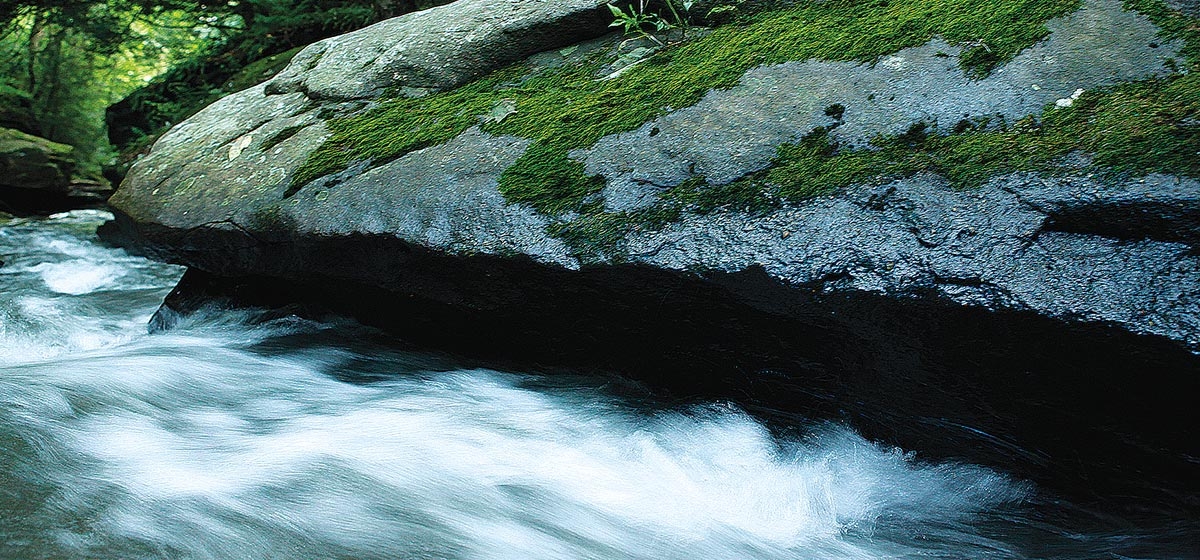What are “Waters of the United States”?

What are the so-called “waters of the United States” and why did the Obama administration expand the definition? To understand that is to understand the evolution of environmental regulation in the United States and how the nation’s courts have interpreted what’s protected.
With the exception of the 1948 Federal Water Pollution Act, hardly any water regulations existed until the 1950s and ’60s when the federal government began to encourage states to protect water resources. In the 1970s, overarching national environmental regulations began to take shape, with the 1972 Clean Water Act’s “objective to restore and maintain the chemical, physical and biological integrity of the nation’s waters.” The Clean Water Act set an ambitious—and unmet—goal that “discharge of pollutants into the navigable waters be eliminated by 1985.”
The law—enforced by the U.S. Army Corps of Engineers—gives the federal government jurisdiction over “waters of the United States.” The definition of those waters is key to today’s debate.
The federal code of regulations defines those as waters used for past or present interstate or foreign commerce, including those “which are subject to the ebb and flow of the tide.” They also include interstate wetlands and waters that could affect commerce between states. The Corps grants permits for discharge into any of these navigable waters.
Grant MacIntyre, director of the Environmental Law Clinic at the University of Pittsburgh, offers this explanation: “As an example, you can put a boat on the Allegheny and eventually flow down to Ohio. Well there’s your interstate commerce connection. That’s part of why [waters of the United States] is such an important term under the Clean Water Act. Subject to some exceptions, that’s one of the easiest ways for the federal government to exercise jurisdiction over something that’s within a state.”
In 2001, the Supreme Court ruled in a 5-4 decision in Solid Waste Agency of N. Cook County v. U.S. Army Corps of Engineers that the Corps could not deny a permit for the Chicago agency to use as a landfill an abandoned gravel pit where water accumulated and attracted migratory birds. Essentially, the court ruled that the Corps doesn’t have jurisdiction over an isolated body of water within a state.
In 2006, in the 4-1-4 decision of Rapanos v. the U.S., the court grappled with whether land developers broke the law by filling wetlands in Michigan.
“That rule has a very long history,” MacIntyre said. “The EPA has tried to figure out what exactly the waters of the United States are for years. It’s been up and down to the Supreme Court a few times.”
Former Justice Antonin Scalia wrote in his Rapanos opinion, “The restriction of ‘the waters of the United States’ to exclude channels containing merely intermittent or ephemeral flow also accords with the commonsense understanding of the term—the Corps has stretched the term ‘waters of the United States’ beyond parody.”
Justice Anthony Kennedy focused on whether waterways had a “significant nexus” to the waters under the purview of the Corps—meaning to smaller waterways and wetlands that connect to the so-called navigable waters, significantly affecting the chemical, physical and biological characteristics of downstream waters.
“Essentially it boils down to what waters the federal government can regulate, and often, almost always, that regulation is in the form of requiring a permit to fill in a wetland,” MacIntyre said. “So the people who are concerned about impacts are [in] farming, housing development, those are a couple of the bigger industries. How the cases get up to the Supreme Court is individuals, to the extent they seek to build a house on a wetland or near a wetland. Those are the type of issues you see at stake; it’s complex.”
Whether water remains in one spot year-round and how it might affect chemistry and purity downstream would prove central to the Obama administration’s aim to clarify “waters of the United States.”
“They essentially took the position that a water that passed either of those two tests, subject to some additional scientific clarification, would be waters of the United States and be subject to jurisdiction,” MacIntyre said. “And I think people expect that the current administration would not have that view.”





